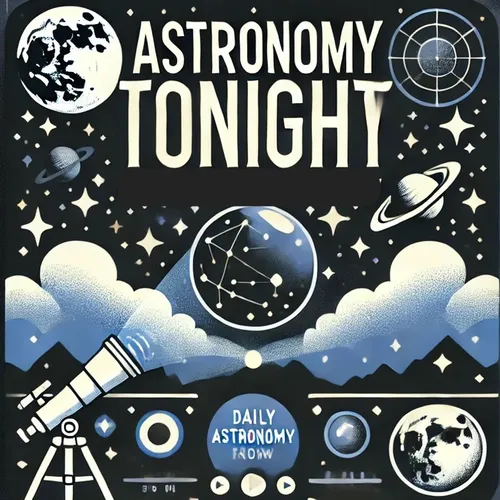Astronomy Tonight for - 10-16-2024
- Author
- Inception Point Ai
- Published
- Wed 16 Oct 2024
- Episode Link
- https://www.spreaker.com/episode/astronomy-tonight-for-10-16-2024--62383296
Ah, October 16th! A date that sparkles in the astronomical calendar like a distant supernova. Let's turn our telescopes to the year 1982 for a truly stellar event.
On October 16, 1982, the astronomy world was abuzz with excitement as the first-ever detection of a pulsar in a globular cluster was announced. This groundbreaking discovery was made by Donald C. Backer, Shrinivas R. Kulkarni, Carl Heiles, Michael Davis, and Miller Goss using the Arecibo radio telescope in Puerto Rico.
The pulsar in question, designated as PSR B1821-24A (also known as PSR J1824-2452A), was found in the globular cluster M28, located about 18,000 light-years away in the constellation Sagittarius. This rapidly rotating neutron star spins on its axis about 218 times per second – that's faster than your kitchen blender on its highest setting!
The discovery was a cosmic game-changer. Prior to this, astronomers believed that pulsars in globular clusters were as rare as a solar eclipse on a cloudy day. This finding opened up a whole new area of study in astrophysics, leading to the detection of many more pulsars in globular clusters and reshaping our understanding of stellar evolution and the dynamics of these ancient star cities.
Imagine the excitement in the control room that day! The astronomers probably felt like they had hit the cosmic jackpot. One can almost picture them doing a celebratory dance around the computer terminals, their faces lit up brighter than the screens displaying the telltale pulsar signals.
This discovery was like finding a cosmic lighthouse in a sea of stars, beaming out regular pulses of radio waves across the vast expanse of space. It's as if the universe decided to play a cosmic game of hide-and-seek, and these clever astronomers managed to tag the sneakiest player of all.
So, the next time you look up at the night sky on October 16th, give a little nod to PSR B1821-24A, the pulsar that proved that even in the oldest stellar neighborhoods of our galaxy, there's always room for a little spin!
This content was created in partnership and with the help of Artificial Intelligence AI
